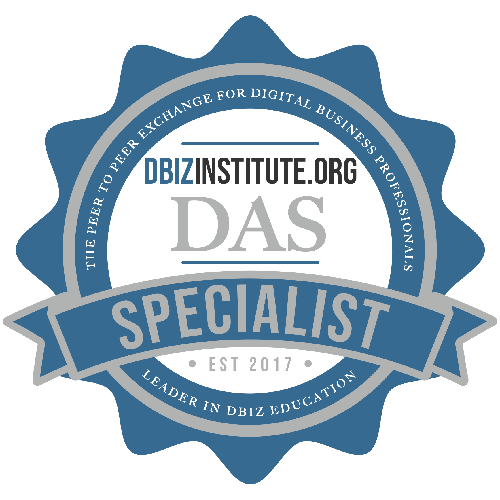Scaling BPM+ Across Your Organization: Best Practices and Key Considerations
In today’s fast-paced business environment, process automation and optimization are no longer optional—they’re essential for staying competitive. As BPM professionals, you’re already familiar with BPMN (Business Process Model and Notation) and its ability to streamline processes. But as organizations grow, the challenge becomes scaling these processes across different departments, geographies, and even industries.
That’s where BPM+ comes in. The integrated approach of BPMN, DMN (Decision Model and Notation), and CMMN (Case Management Model and Notation) provides a robust framework for managing workflows, decision logic, and case management in a way that can scale seamlessly across the enterprise.
But scaling process management isn’t without its hurdles. In this article, we’ll dive into the best practices for scaling BPM+ across an organization, discuss common challenges, and explore the benefits of a scalable, unified process management framework.
The Importance of Scalable Process Management
In smaller organizations, process management is often localized, with workflows and decision-making contained within individual departments. But as a company grows, processes become more complex, and the need for cross-functional collaboration increases. Scaling BPM+ across an organization is key to maintaining efficiency and alignment, as it allows different parts of the business to operate from the same playbook.
A scalable process management framework offers numerous benefits, including:
- Consistency across departments: Standardized processes ensure that every department follows the same workflow, reducing variability and ensuring quality.
- Enhanced collaboration: BPM+ fosters cross-functional collaboration by providing a common language (BPMN, DMN, CMMN) for process modeling, decision-making, and case management.
- Reduced bottlenecks: With transparent and standardized processes, bottlenecks can be identified and eliminated more easily.
- Flexibility and adaptability: By integrating dynamic case management (CMMN), BPM+ ensures that processes can evolve as the business grows, adapting to new needs and complexities.
However, to achieve these benefits, it’s critical to approach scaling in a methodical and thoughtful way.
Best Practices for Scaling BPM+
- Start with a Strong Foundation in BPMN
Before you can scale BPM+ across the organization, you need to have a solid grasp of BPMN. BPMN provides the foundational language for process modeling, and ensuring that everyone in your organization is fluent in this standard is crucial for successful scaling.
Best practices for building a strong BPMN foundation include:
- Train all relevant staff: Ensure that not just process modelers, but all relevant stakeholders are trained in BPMN. This creates a shared understanding across departments.
- Use BPMN consistently: Create and enforce standard modeling conventions and notations across all processes to avoid ambiguity and inconsistency.
- Integrate DMN for Consistent Decision-Making
As you scale, decision-making becomes a key area where consistency is critical. DMN allows you to model decision-making logic in a way that is transparent, repeatable, and easy to update.
To scale decision management across the organization:
- Standardize decision rules: Make sure that the decision rules applied in one department are aligned with organizational goals and are consistently applied across the board.
- Leverage automation: By automating decision logic using DMN, you reduce the manual work involved in making repetitive decisions, increasing efficiency and reducing human error.
- Use CMMN to Manage Complex, Non-linear Processes
Not all processes are straightforward or linear. Case-based processes—common in industries like healthcare, legal, or customer service—often require dynamic workflows that can adapt as a case evolves. CMMN provides the flexibility to manage these types of processes.
When scaling CMMN across your organization:
- Map out complex workflows carefully: Before you implement case management solutions, take the time to map out each case’s lifecycle. Identify key decision points and potential deviations to create a model that can adapt to different scenarios.
- Integrate with BPMN and DMN: A significant advantage of BPM+ is its ability to integrate case management, workflows, and decision logic into a unified framework. Ensure that your CMMN processes are seamlessly linked with your BPMN workflows and DMN decision logic.
- Centralize Process Governance
One of the biggest challenges in scaling process management across an organization is maintaining oversight and control. As more departments adopt BPM+, governance becomes critical to ensure that processes remain aligned with business objectives and comply with industry regulations.
To centralize process governance effectively:
- Create a governance team: Establish a cross-functional team responsible for overseeing BPM+ implementation and ongoing management.
- Implement a process management tool: Use a centralized tool that supports BPM+, allowing your governance team to monitor, audit, and optimize processes in real time.
- Monitor, Measure, and Optimize
Scaling BPM+ isn’t a “set it and forget it” initiative. To maintain efficiency and ensure long-term success, processes must be continuously monitored, measured, and optimized.
Key areas to focus on when optimizing scaled processes include:
- Performance metrics: Use KPIs to track how well processes are performing across the organization. Common metrics include cycle time, error rates, and customer satisfaction.
- Feedback loops: Create feedback mechanisms to ensure that process modelers and stakeholders can quickly identify and address bottlenecks or inefficiencies.
- Continuous improvement: Scaling BPM+ is an ongoing process. Encourage a culture of continuous improvement, where processes are regularly reviewed and updated based on data and feedback.
Overcoming Challenges in Scaling BPM+
While the benefits of scaling BPM+ are significant, there are challenges that organizations must be prepared to navigate. These include:
- Change management: Scaling BPM+ requires a cultural shift, particularly in larger organizations where processes have been localized for years. To ensure success, invest in change management initiatives that educate and engage staff.
- Technical integration: As BPM+ is rolled out across departments, ensuring seamless integration with existing systems is critical. Work closely with IT teams to address technical challenges and ensure that BPM+ is integrated smoothly into your organization’s technology stack.
- Maintaining flexibility: As you scale, maintaining flexibility becomes increasingly important. While standardized processes are essential for consistency, BPM+ provides the ability to adapt workflows, decision rules, and case management as your organization grows and evolves.
Conclusion: BPM+ is the Future of Scalable Process Management
For BPM professionals looking to take their organization to the next level, BPM+ provides a powerful, scalable solution. By integrating BPMN, DMN, and CMMN into a cohesive framework, BPM+ enables organizations to scale their process management efforts seamlessly, while maintaining visibility, consistency, and agility.
Whether you’re starting with small-scale implementations or looking to expand BPM+ across your entire enterprise, following best practices for scaling will set you up for long-term success. For BPM professionals, mastering BPM+ represents a significant opportunity to lead organizational growth and innovation in process management.
Learn more:
Explore the BPM+ Certificate here: https://www.bpminstitute.org/product/bpm-specialist-code-specialist-certificate-program-bpms/
Take the BPM+ Self-Assessment here: https://www.bpminstitute.org/qsm_quiz/bpm-skills-self-assessment-2/

















